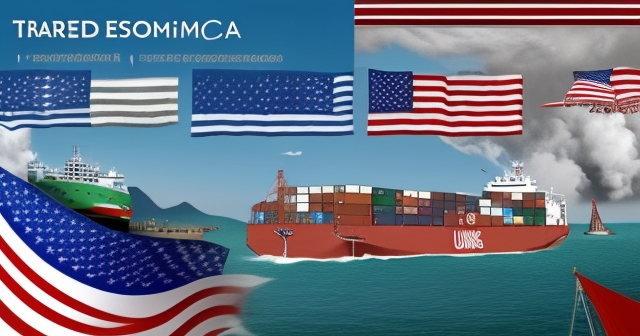
USMCA Deal: Navigating Economic Currents and Future Challenges
“`html
Table of Contents
ToggleNavigating the USMCA Deal: Economic Currents, Trade Winds, and Shifting Policy Landscapes
Welcome, fellow navigators of the global economy. As traders and investors, we constantly seek to understand the forces that shape markets and create opportunities. One such monumental force governing a vast and interconnected region is the United States-Mexico-Canada Agreement, widely known as the USMCA. This pact fundamentally redefined trade relations across North America when it came into effect, impacting everything from auto manufacturing to agricultural exports.
You might recall its predecessor, the North American Free Trade Agreement (NAFTA), a landmark deal that dramatically liberalized trade but also faced significant criticism over its long history. The USMCA was born out of a desire to modernize NAFTA, address perceived imbalances, and create what was envisioned as a more mutually beneficial framework for workers, businesses, and consumers across the three nations. Yet, even relatively new, this critical trade agreement is now sailing into turbulent waters, facing calls for renegotiation and disruptive policy shifts that demand our careful attention.
Understanding the USMCA deal isn’t just an academic exercise; it’s crucial for grasping macroeconomic trends, anticipating sector-specific impacts, and making informed investment decisions. Think of it as reading the essential charts before setting sail across a major ocean. This article will guide you through the USMCA’s foundations, examine its performance since implementation, confront the emerging challenges, and peer into the uncertain future shaped by mandatory reviews and political winds.

The Cornerstone: Understanding the USMCA’s Foundations and Goals
Let’s begin by grounding ourselves in the basics. What exactly is the USMCA, and why did it replace NAFTA? The USMCA entered into force on July 1, 2020, after years of intense negotiation and debate. Its primary goal was to update and rebalance the trade relationship between the United States, Mexico, and Canada, which had evolved considerably since NAFTA was signed in the early 1990s.
- The USMCA aims to support mutually beneficial trade.
- It seeks to lead to freer markets and fairer trade.
- Its provisions are designed to enable robust economic growth in North America.
The stated aims of the USMCA are ambitious: to support mutually beneficial trade, lead to freer markets, ensure fairer trade, and enable robust economic growth in North America. It sought to achieve this by modernizing provisions, adding new chapters that address contemporary economic realities, and strengthening enforcement mechanisms. The architects of the deal emphasized creating a framework that supports high-paying jobs and encourages investment within the continent.
Key provisions within the USMCA represent significant departures or updates from NAFTA. Perhaps one of the most discussed changes pertains to the rules of origin for vehicles and automotive parts. Under USMCA, to qualify for zero tariffs when traded between the member countries, a significantly higher percentage of a vehicle’s components must originate from North America – specifically, 75% over time, up from NAFTA’s 62.5%. This was coupled with new requirements regarding labor value content, mandating that a certain percentage of a vehicle’s manufacturing must be done by workers earning at least $16 USD per hour. These rules were explicitly designed to incentivize automakers to source parts and perform manufacturing within the USMCA region, particularly in higher-wage areas.
Beyond automobiles, the USMCA introduced disciplines on currency manipulation, a topic not extensively covered in NAFTA, aiming to prevent countries from gaining an unfair trade advantage by devaluing their currencies. It also modernized provisions for agricultural trade, services trade, and intellectual property protection, adapting them to the digital age and current global standards. Crucially, the USMCA added entirely new chapters addressing areas like:
- Digital Trade: Establishing rules to facilitate cross-border data flows and protect consumers online, critical in our increasingly digital economy.
- Anticorruption: Committing the parties to measures preventing and combating corruption affecting international trade and investment.
- Good Regulatory Practices: Encouraging transparency and effective regulation to minimize unnecessary trade barriers.
- Support for Small and Medium-Sized Enterprises (SMEs): Recognizing the vital role of SMEs and promoting their participation in regional trade.
These additions reflect a recognition that the global economy has changed dramatically since NAFTA was conceived. The USMCA, on paper, aimed to build a framework better suited for 21st-century challenges and opportunities, promoting deeper integration while addressing specific concerns raised by each member nation during negotiations.
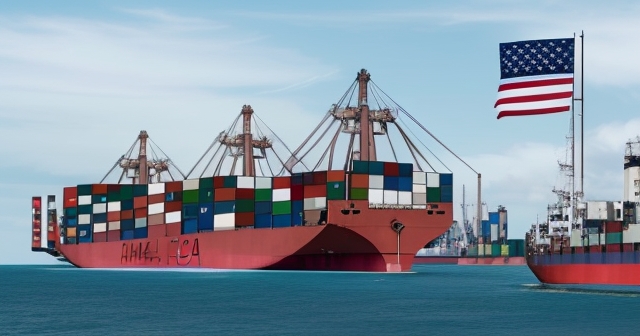
Economic Flows: Performance Under the USMCA Deal
Since its implementation in mid-2020, the USMCA has overseen substantial trade and investment flows across North America, even amidst the disruptions of a global pandemic and subsequent economic shifts. Looking at the numbers gives us a clearer picture of the agreement’s scale and initial impact.
Consider the trade volume in 2022, a year providing a more stable look than the initial implementation year. Total U.S. goods and services trade with its USMCA partners, Mexico and Canada, reached an estimated $1.8 trillion. This figure alone underscores the immense economic interdependence of the three nations under the agreement.
| Trade Component | 2021 | 2022 |
|---|---|---|
| U.S. Goods Exports | $586.9 billion | $680.8 billion |
| U.S. Goods Imports | $739.6 billion | $891.3 billion |
| Goods Trade Deficit | $152.7 billion | $210.6 billion |
Let’s break down the goods trade. In 2022, U.S. goods exports to Canada and Mexico totaled $680.8 billion. This represented a robust increase of 16.0% compared to 2021, indicating a strong rebound in cross-border commerce as the global economy recovered. However, U.S. goods imports from these partners were even higher, reaching $891.3 billion, a significant 20.5% increase from 2021. What does this disparity reveal? It resulted in a U.S. goods trade deficit with USMCA countries of $210.6 billion in 2022, marking a substantial 37.5% widening of the deficit compared to the previous year.
The picture is different when we look at services trade. U.S. services exports to Canada and Mexico totaled $109.0 billion in 2022, up 23.6% from 2021. Simultaneously, U.S. services imports from these countries were $83.0 billion, increasing by 27.0%. In this segment, the United States maintains a trade surplus, which stood at $26.0 billion in 2022, showing a 14.0% increase from the previous year. This highlights areas of U.S. strength in the North American economic relationship, particularly in sectors like professional services, financial services, and travel.
| FDI Component | 2021 | 2022 |
|---|---|---|
| U.S. FDI to USMCA | $520.0 billion | $569.0 billion |
| FDI from USMCA to U.S. | $577.0 billion | $623.1 billion |
Trade is only one side of the coin; investment flows are equally critical. Foreign Direct Investment (FDI) represents a long-term commitment, signaling confidence in a country’s economic stability and growth potential. In 2022, the stock of U.S. FDI in USMCA countries was $569.0 billion, an increase of 9.5% from 2021. This indicates continued U.S. investment in its neighbors, flowing into various sectors, including manufacturing, finance, and resources.
Conversely, the stock of FDI from USMCA countries (Canada and Mexico) in the United States was $623.1 billion in 2022, growing by 8.0% compared to 2021. This larger inward FDI stock underscores the reciprocal nature of investment and the significant role Canadian and Mexican companies play within the U.S. economy. Sectors receiving notable investment include manufacturing, wholesale trade, and finance and insurance.
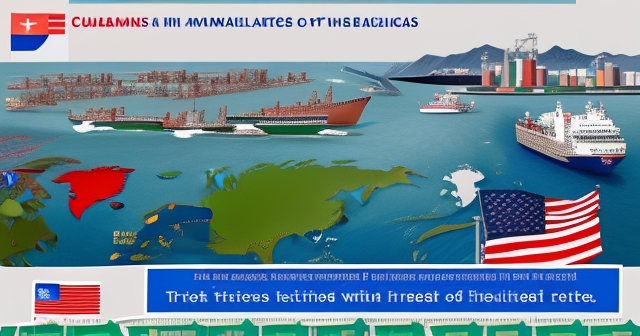
These statistics paint a picture of deep economic integration under the USMCA framework. While the goods trade deficit remains a sensitive point for some, particularly in the United States, the overall volume of trade and investment demonstrates that the agreement facilitates substantial cross-border economic activity. It provides a predictable framework that allows businesses to plan, invest, and operate across the North American supply chain. But how predictable is this framework truly, especially when faced with political pressures?
Turbulence Ahead: Calls for Renegotiation and New Tariff Challenges
Despite the significant trade and investment volumes flowing under the USMCA, the agreement is currently facing considerable political pressure, introducing a layer of uncertainty that no trader or investor can afford to ignore. A major source of this potential instability comes from former President Donald Trump, who has publicly called for the renegotiation or even possible termination of the USMCA deal.
You might recall that the USMCA was negotiated during the Trump administration, presented as a significant improvement over NAFTA. However, Trump’s recent statements suggest he now believes the terms are still unfavorable to the United States and require further adjustment. This stance is particularly relevant given the upcoming U.S. presidential election, as a potential return to office could translate these calls into concrete policy actions.
Compounding this uncertainty is the imposition of new, potentially disruptive tariffs. Under the authority of Section 232 of the Trade Expansion Act of 1962, the U.S. administration has introduced tiered tariffs of 25% on imported autos and parts. Section 232 grants the President the power to impose tariffs on imports if they are deemed a threat to national security.
The administration has offered specific justifications for these new tariffs and the pressure on USMCA partners. These reasons reportedly include concerns about Canada’s and Mexico’s perceived failures to adequately address issues such as fentanyl trafficking and illegal immigration. Furthermore, the North American auto supply chain itself has been cited as a potential national security risk, providing a rationale under Section 232 for measures targeting automotive imports.
This approach using Section 232 is particularly contentious because the USMCA deal contains specific safeguards intended to protect Canada and Mexico from precisely this type of auto tariff. These provisions were designed to provide predictability for the integrated North American automotive sector, ensuring that vehicles meeting the USMCA’s rules of origin could be traded tariff-free, thus encouraging investment within the region. The application of Section 232 appears to bypass or override these USMCA-specific protections, raising questions about the enforceability and reliability of the agreement’s own safeguards.
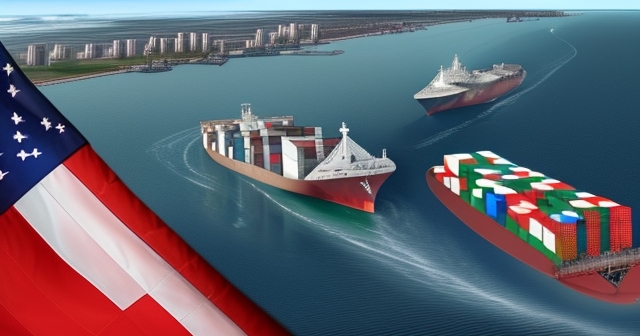
For businesses operating within North America, particularly in the automotive sector, this situation is deeply unsettling. The specter of renegotiation, combined with the immediate threat of significant tariffs, creates an environment of regulatory instability. How can companies make long-term investment decisions, plan supply chains, or forecast costs when the fundamental rules governing trade might change unexpectedly?
Industry Ripples: Impact on the Auto Sector and Investment Climate
The sector most acutely feeling the impact of this policy uncertainty is undoubtedly the integrated North American auto industry. This sector relies heavily on seamless, tariff-free movement of parts and finished vehicles across the U U.S., Mexican, and Canadian borders. The USMCA deal, with its stringent rules of origin, was specifically designed to solidify this regional supply chain and encourage investment within North America.
However, the recent actions and rhetoric, particularly the threat of Section 232 auto tariffs, have created significant friction. Automakers and their vast network of suppliers across the continent are grappling with a lack of predictability. Consider a company planning to build a new manufacturing plant or expand an existing one. Such decisions involve billions of dollars and require a stable long-term outlook on trade regulations and market access.
When faced with the possibility of a sudden 25% tariff on parts or finished vehicles moving between the USMCA countries, these investment plans are often delayed or put on hold. Why commit substantial capital when the cost structure could dramatically change overnight? This uncertainty doesn’t just affect future investments; it can also impact current operations. Companies may delay production increases, reconsider sourcing strategies, or even explore contingency plans that could involve shifting manufacturing elsewhere if the North American market becomes unreliable or overly expensive due to tariffs.
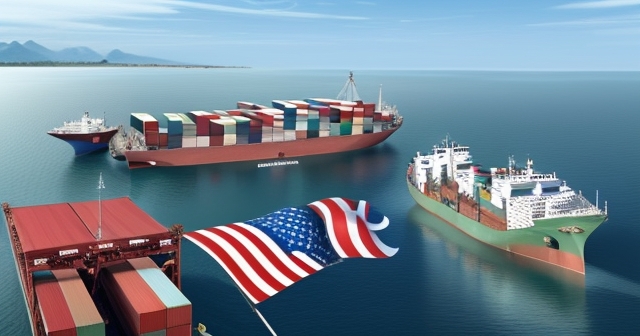
Reports from industry associations and analysts highlight the potential consequences: delayed investment decisions that could hinder job creation, manufacturing delays as companies pause planning, and a chilling effect on the very supply chain resilience that policymakers often advocate for. The argument is that these policy shifts, while perhaps intended to exert pressure or address unrelated issues, directly undermine the USMCA’s stated goal of encouraging robust investment in the North American auto sector by introducing an unacceptable level of risk.
Critics argue that using national security grounds (Section 232) for what appear to be trade enforcement or leverage tactics sets a dangerous precedent. It suggests that negotiated trade agreements, even one as recent and carefully crafted as the USMCA, can be easily bypassed by invoking other statutory authorities. This erodes the trust and certainty that are essential for cross-border business and long-term economic planning.
For traders interested in the automotive sector or related industries (steel, aluminum, logistics, etc.), understanding this tension is vital. Policy uncertainty translates directly into market volatility and can impact the stock valuations of companies with significant exposure to North American production and trade flows. Monitoring official statements, industry responses, and trade data becomes even more critical in this environment.
The Crucible: The Upcoming Mandated Review Process
Adding another layer of complexity and urgency to the current situation is a built-in mechanism within the USMCA itself: a mandatory review process. Unlike NAFTA, which lacked such a formal requirement, the USMCA includes a provision requiring the three member countries to review the agreement jointly every six years. This structured review provides an opportunity to assess the agreement’s functioning, address any issues that have arisen, and decide on its future.
The first of these mandated reviews is fast approaching. It is formally expected to begin in the fourth quarter of this year, likely in late September or the first week of October. This review process is not merely a bureaucratic exercise; it’s a critical juncture where the member countries will sit down and evaluate whether the USMCA is meeting its objectives and how it should proceed.
| Review Outcome | Implications |
|---|---|
| Agreement Confirmed | Extension for 16 years, stability for investment planning. |
| Minor Adjustments Proposed | Limited changes aimed at improving specific provisions. |
| Contentious Review | Potential for disagreement and risk of instability. |
Crucially, the review process has implications for the agreement’s lifespan. If, after the review, all three parties agree to continue the agreement, its term is extended for another sixteen years. However, if one or more parties express dissatisfaction or wish to propose significant changes that cannot be resolved during the review, it could trigger a period of potential uncertainty about the agreement’s long-term future.
Given former President Trump’s public calls for renegotiation, the upcoming review process is seen by some as a potential vehicle for attempting to achieve those revised trade terms for the United States. He has publicly linked the review to his desire for better trade conditions, suggesting he could use this mandated check-in point to push for substantial changes to the USMCA framework if he were to return to office.
Canada and Mexico, on the other hand, are likely prioritizing stability and the preservation of the existing agreement, particularly the safeguards they negotiated. They would likely seek to ensure the review is a constructive process aimed at minor adjustments or addressing specific implementation issues, rather than a full-blown renegotiation that could unravel the entire deal.
This inherent tension between the potential desire for significant changes by one party and the others’ preference for stability makes the upcoming review a critical event. How the review is conducted, what issues are prioritized, and whether the parties can find common ground will heavily influence the perceived reliability and future trajectory of North American trade relations. For traders, understanding this timeline and the potential outcomes of the review is essential for assessing geopolitical risk and its potential impact on regional markets.
Beyond Trade Terms: Geopolitical and Economic Undercurrents
While the public discourse around the USMCA often focuses on specific trade balances, rules of origin, or tariffs, it’s important to recognize that the current challenges and future of the agreement are also being shaped by broader economic and geopolitical forces. Trade policy doesn’t exist in a vacuum; it’s influenced by global competition, supply chain vulnerabilities exposed by recent crises, and strategic considerations.
Experts and commentators suggest that the changing stance towards the USMCA deal, and the focus on issues like supply chain security and critical minerals, are influenced by the broader strategic competition between the United States and China. There is a growing desire in the U.S. to “nearshore” or “friendshore” supply chains, bringing production closer to home or to trusted allies (like Canada and Mexico) to reduce reliance on potentially adversarial nations.
This strategic imperative could theoretically reinforce the value of the integrated North American supply chain facilitated by the USMCA. However, paradoxically, actions that create uncertainty within this very supply chain, such as the imposition of unpredictable tariffs or calls for renegotiation, seem counterproductive to this goal. If companies cannot rely on stable trade rules within North America, they might hesitate to relocate production from Asia, regardless of the geopolitical motivation.
Furthermore, issues like access to critical minerals, essential for modern technologies from electric vehicles to defense systems, are increasingly linked to trade policy and national security. Future discussions around the USMCA, particularly during the review process, could involve securing reliable access to these resources within North America.
The justification for recent policy shifts, such as linking trade measures to issues like fentanyl trafficking and illegal immigration, also highlights the complex intertwining of trade policy with other domestic and foreign policy concerns. This holistic approach to trade relations means that factors seemingly unrelated to commerce can influence the stability and terms of a trade agreement. For investors, this adds another layer of variables to consider – understanding the political motivations and broader strategic context behind trade actions is as important as analyzing the specific economic provisions of the agreement.
Navigating this environment requires a nuanced understanding. It’s not just about the numbers on a trade balance sheet; it’s about recognizing how geopolitical competition, supply chain vulnerabilities, and domestic political priorities can converge to impact international agreements and, consequently, the markets we trade in.
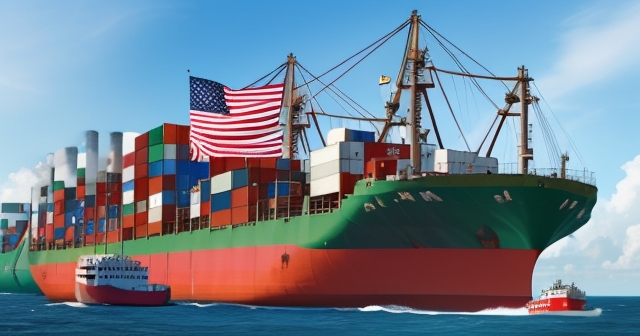
Understanding the Mechanics: How the Review Might Unfold
Let’s delve a bit deeper into the practical aspects of the upcoming mandated review. This isn’t an optional check-in; it’s a requirement written into the USMCA itself under Article 34.1. The review is set to occur every six years, and the first window opens shortly. Within ten years of the agreement entering into force (July 1, 2020), which takes us to July 1, 2030, any party can request an extension of the agreement’s term for another sixteen years.
However, the six-year review is specifically designed to facilitate this longer-term decision. During this review, representatives from the United States, Mexico, and Canada will meet to discuss the operation of the agreement. They will examine whether the USMCA is functioning effectively and achieving its stated goals. This provides a formal mechanism to identify potential shortcomings, areas for improvement, or chapters that may need updating based on economic and technological developments since 2020.
What happens if there are disagreements during the review? If all three parties affirm their desire to continue the agreement, the term is automatically extended for another sixteen years, kicking the can down the road, so to speak, until the next six-year review. But if one or more parties do not affirm their desire to continue, or if significant issues are raised that cannot be easily resolved, it doesn’t mean the agreement immediately terminates. Instead, it would create a period of intense negotiation and uncertainty over the following ten years, leading up to the original termination date of July 1, 2036, unless extended.
Think of it like a major corporate bond with a call option. There’s a fixed maturity date, but there’s a periodic review point where the issuer (the countries) can effectively extend the term if everyone agrees. Failure to agree at the review point doesn’t immediately default the bond, but it significantly increases the risk and uncertainty regarding its full term, potentially impacting its market value (the value and reliability of the trade pact).
The fact that the review is mandated forces a conversation, preventing any party from passively letting issues fester. However, whether this conversation leads to constructive adjustments or highlights fundamental disagreements remains to be seen. The political climate and the specific priorities of the governments in power in each country at the time of the review will heavily influence its outcome. For example, if a U.S. administration enters the review process explicitly seeking major concessions or changes, it could easily turn a routine check-in into a contentious negotiation, creating significant market volatility.
Anticipating Outcomes: Potential Scenarios for the USMCA’s Future
Given the current pressures and the impending review, what are the potential scenarios for the USMCA’s future? While predicting the exact outcome of complex international negotiations is impossible, we can outline a range of possibilities based on the current dynamics:
- Scenario 1: Affirmation and Extension (Smooth Sailing): The most stable outcome would be for all three countries to conclude the review positively, affirm their commitment to the agreement, and agree to extend its term for another sixteen years. This would signal confidence in the USMCA framework and provide businesses with the long-term predictability needed for investment and trade planning. This scenario is perhaps the least likely if the U.S. enters the review pushing for significant changes, but it remains a possibility if a compromise can be reached or if the political priorities shift.
- Scenario 2: Minor Adjustments and Extension (Modest Refit): The parties identify specific areas for improvement or minor updates during the review. These could involve technical aspects, clarification of certain rules, or adding provisions for new areas like emerging technologies. Successful negotiation of these minor adjustments would lead to affirmation and extension, maintaining the core of the agreement while addressing contemporary issues. This is a more probable scenario than a simple affirmation, as no agreement is perfect and requires periodic tuning.
- Scenario 3: Contentious Review and Uncertain Future (Stormy Seas): One or more parties, particularly the United States under certain political leadership, enters the review demanding significant changes or concessions that the other parties are unwilling to grant. The review process becomes a forum for difficult negotiations. If these issues cannot be resolved within the review period, the agreement’s extension would not be affirmed. This would trigger the ten-year countdown to potential termination (July 1, 2036), creating prolonged uncertainty about the future of North American trade relations.
- Scenario 4: Triggering Renegotiation (Major Overhaul Attempt): If the review reveals deep dissatisfaction or a strong desire for major changes that cannot be accommodated within the review process, a party (again, most likely the U.S. based on current rhetoric) could formally seek to renegotiate core aspects of the agreement outside the review mechanism. This could lead to a repeat of the intense, multi-year negotiation process that preceded the USMCA, with all the associated risks of failure and economic disruption.
- Scenario 5: Withdrawal Threat/Action (Abandon Ship): In an extreme scenario, if negotiations fail or if political will dictates, a party could threaten to withdraw entirely from the agreement. This would be the most disruptive outcome, potentially leading to a return to higher tariffs and trade barriers, fundamentally altering the landscape for businesses operating in North America. While withdrawing from a major trade pact is a complex and economically costly move, it remains a possibility discussed in certain political circles.
For traders, understanding these potential paths is vital. Each scenario carries different implications for currency valuations, sector performance (especially autos and agriculture), and overall market sentiment towards North American economies. Monitoring the political landscape in all three countries, particularly leading up to and during the review period, will be crucial.
The Trader’s Perspective: How Policy Uncertainty Impacts Markets
So, how does all this complex trade policy and political maneuvering translate into something tangible for you as a trader? Policy uncertainty, especially regarding major trade agreements like the USMCA, is a significant market risk factor. It can impact several key areas:
- Currency Volatility: Changes or threats to trade relationships directly affect the economic outlook of the involved countries. Uncertainty around the USMCA can increase volatility in the USD/CAD and USD/MXN currency pairs. For example, threats of tariffs or renegotiation could put downward pressure on the Canadian Dollar and Mexican Peso relative to the U.S. Dollar, reflecting concerns about reduced export opportunities or economic disruption.
- Sector-Specific Performance: As we’ve discussed, the auto industry is highly sensitive to USMCA rules and potential tariffs. Companies with significant manufacturing or sales exposure in North America can see their stock prices react sharply to news regarding the agreement, tariffs, or the review process. Other sectors reliant on cross-border trade, such as agriculture, manufacturing, and logistics, can also experience significant impacts.
- Investment Climate: Uncertainty deters investment. If businesses are unsure about future trade rules, they are less likely to commit capital to new projects, expansions, or foreign direct investment. A slowdown in investment can negatively impact economic growth projections, influencing stock markets and long-term asset valuations.
- Inflation and Consumer Prices: Tariffs are essentially taxes on imports. If auto tariffs are imposed, the cost of imported vehicles and parts will increase, which can translate into higher prices for consumers. This can contribute to inflationary pressures, which in turn can influence central bank monetary policy decisions and broader economic conditions.
- Supply Chain Disruption: Companies build complex supply chains based on existing trade rules. Changes or threats to these rules can force businesses to reconfigure their supply chains, a costly and time-consuming process that can lead to production delays, increased costs, and reduced efficiency.
For traders, this means that staying informed about the USMCA, the political rhetoric surrounding it, and the upcoming review process is not just for policy wonks. It’s a practical necessity for managing risk and identifying potential trading opportunities arising from policy-induced market movements. Pay attention to official government statements, reports from trade bodies, and commentary from industry leaders. This information can provide crucial insights into the likelihood of different scenarios unfolding.
Lessons from the Past: USMCA vs. NAFTA in a Changing World
To fully appreciate the significance of the current challenges facing the USMCA, it helps to briefly reflect on its predecessor, NAFTA, and the context of its demise. NAFTA was groundbreaking for its time, dramatically reducing tariffs and trade barriers across North America and fostering deeply integrated supply chains, particularly in the automotive sector. It facilitated a surge in trade and investment, undeniably contributing to economic growth in all three countries over its lifespan.
However, NAFTA also faced persistent criticism, particularly in the United States, regarding job losses in certain sectors and concerns about the balance of trade benefits. These criticisms fueled the political will to renegotiate the agreement under the Trump administration, culminating in the USMCA.
The USMCA aimed to address these criticisms by introducing stronger labor and environmental provisions, updating intellectual property rules, adding digital trade chapters, and, notably, revising the rules of origin for automobiles to incentivize North American production. It was presented as a deal that corrected NAFTA’s perceived flaws and offered a better outcome for American workers and businesses.
Yet, the current situation demonstrates that even a renegotiated agreement is not immune to political pressure and changing priorities. The shift from focusing solely on trade terms to incorporating issues like immigration, fentanyl, and national security into trade discussions reflects a broader trend in U.S. foreign policy, where economic relations are increasingly viewed through a strategic and national security lens.
The key lesson here is that trade agreements, no matter how comprehensive, are not static. They exist within a dynamic political and economic environment. For traders, this underscores the importance of understanding the political drivers behind trade policy, not just the technical details of the agreement itself. The stability of a trade pact can be as much dependent on the prevailing political climate as on the robustness of its legal text.
Furthermore, the experience of replacing NAFTA with the USMCA highlights the potential for disruption inherent in major trade policy shifts. While the USMCA transition was managed, the process itself created uncertainty. The current calls for renegotiation or the application of Section 232 tariffs suggest that even the “new” agreement may not provide the long-term, unquestioned stability that businesses desire. This means that the possibility of trade policy changes must always be factored into our analysis when assessing investment risks and opportunities in North America.
FAQ Section
Q:What prompted the creation of the USMCA?
A:The USMCA was created to modernize and improve upon the previous NAFTA agreement, addressing perceived imbalances and enhancing provisions regarding labor, environment, and digital trade.
Q:How does the USMCA impact trade deficits?
A:The USMCA aims to promote fair trade practices, but trade deficits can still occur; for instance, the U.S. experienced significant trade deficits with USMCA partners in 2022 despite increased trade volumes.
Q:What is the significance of the mandated review process?
A:The mandated review process occurs every six years and allows member countries to assess the agreement’s effectiveness and propose changes, impacting the agreement’s longevity and relevance.
“`
You may also like
Calendar
| 一 | 二 | 三 | 四 | 五 | 六 | 日 |
|---|---|---|---|---|---|---|
| 1 | 2 | 3 | 4 | 5 | 6 | 7 |
| 8 | 9 | 10 | 11 | 12 | 13 | 14 |
| 15 | 16 | 17 | 18 | 19 | 20 | 21 |
| 22 | 23 | 24 | 25 | 26 | 27 | 28 |
| 29 | 30 | 31 | ||||
發佈留言
很抱歉,必須登入網站才能發佈留言。